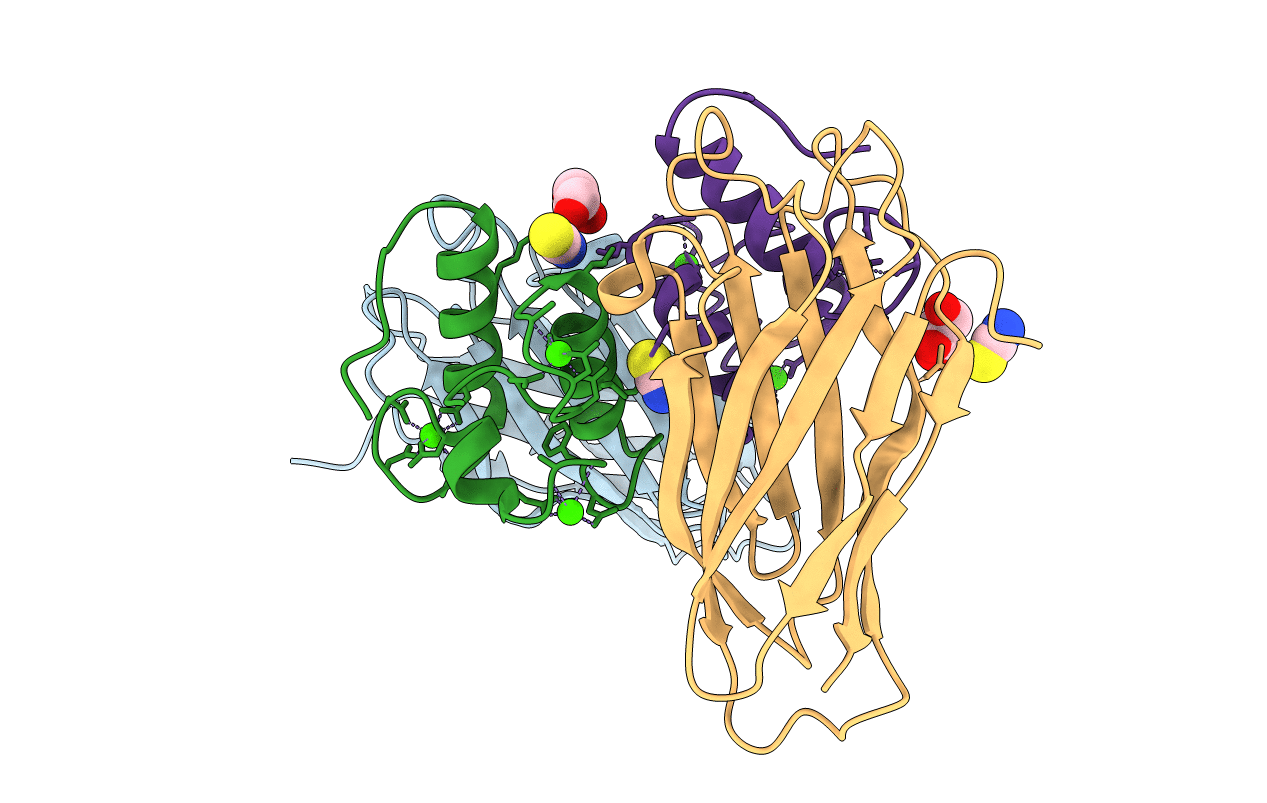
Deposition Date
2017-04-24
Release Date
2018-01-31
Last Version Date
2024-01-17
Entry Detail
PDB ID:
5NRK
Keywords:
Title:
Crystal structure of the sixth cohesin from Acetivibrio cellulolyticus' scaffoldin B in complex with Cel5 dockerin S15I, I16N mutant
Biological Source:
Source Organism:
Acetivibrio cellulolyticus (Taxon ID: 35830)
Host Organism:
Method Details:
Experimental Method:
Resolution:
1.45 Å
R-Value Free:
0.16
R-Value Work:
0.14
R-Value Observed:
0.14
Space Group:
P 21 21 21


